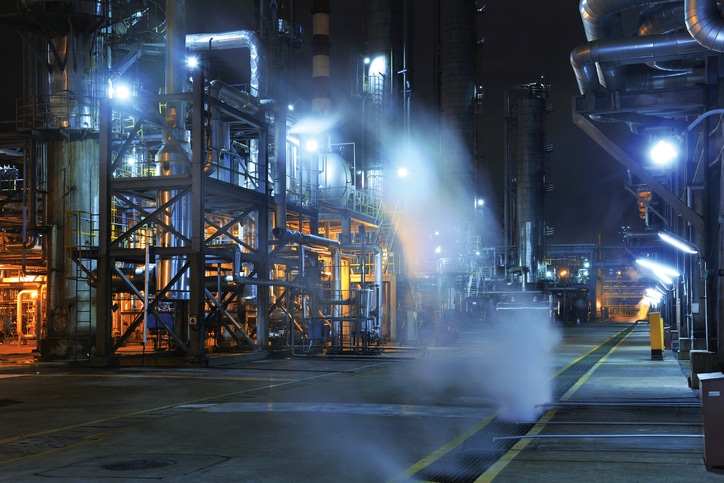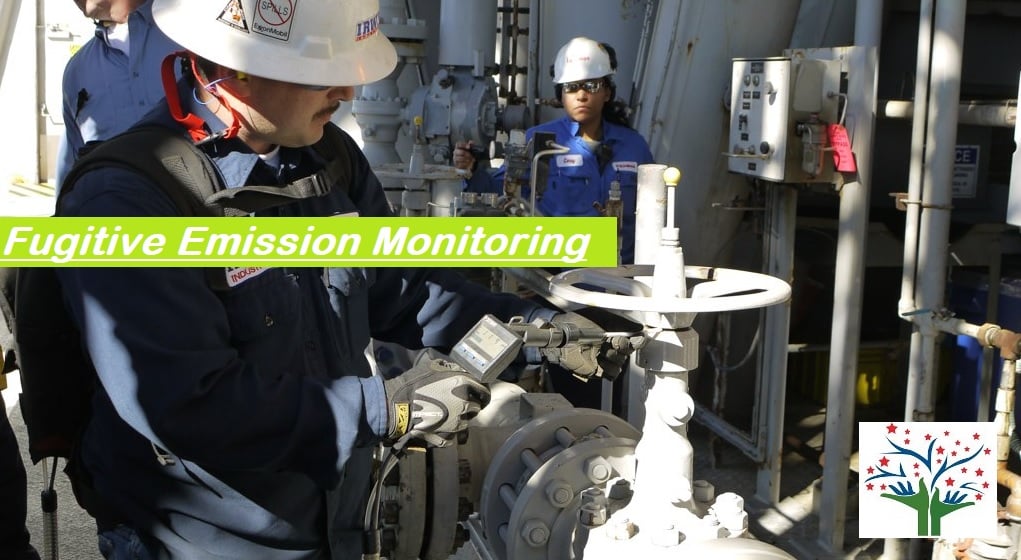We are all very well aware of the world’s pollution status and the causes and impacts the pollution is having on our health and the environment.
But, are we aware of the type of pollution which escapes undetectably and has a significant contribution to severe environmental problems like Climate Change and Global Warming?
Yes, there is such type of pollution, and these which escape undetectably are calledFugitive emissions or Fugitive gases.
What is Fugitive Emissions?
Emissions of gases or vapors from pressurized equipment due to leaks & other unintended or irregular releases of gases, mostly from industrial activities, are known as fugitive emissions.

Why is it called as Fugitive emissions instead of leaks?
The term fugitive is used because the emission is neither calculated in the system design, captured by the emission control equipment/systems, nor detected through normal equipment monitoring process.
In simpler words, the meaning of Fugitive is the one who get away without getting detected.
The words fugitive emissions and leaks can be used interchangeably, but not always. Fugitive emission is a type of leakage that is not detected through a normal monitoring process.
All Fugitive emissions are leaks, but not all leaks are fugitive emissions
Read About Stack Emissions Monitoring
What is an Example of a Fugitive Emission?
Fugitive emissions like VOC might be leaking from company equipment and can cause serious life hazards to your staff and company revenue. It can also lead to an explosion in the surrounding area. It is a critical task and needs to be done by experts to identify leaks from individual pieces of equipment such as compressors, valves, connectors.
Then our expert team can identify such parts and tag them for replacement or repair. After implementing recommendations, again readings are taken and compared to previous lessons to calculate the Fugitive emission Study’s impact.
What is Fugitive Emission consists?
Fugitive Emissions consist of accidental release of vapors or harmful/non-harmful gases from industrial pieces of equipment or any accidents. It can also happen via vaporization due to improper settings of temperature in vessels. In General, fugitive emissions consist of dust, Fine particles, open-pit mines.
Learn more Air Quality Testing and Monitoring
Need for Fugitive emission monitoring?
Fugitive emissions can be a real threat to human health, safety, and the environment. The following consequences could result from Fugitive emissions if they are not monitored and regulated.
- The immediate threat to human health:Breathing of toxic gases like Volatile Organic Compounds (VOCs) could lead to headaches, fatigue, visual disorders, memory impairment.
- Increased risks of accidents and explosion
- Global warming, climate change, and other environmental problems
- Economic loss through lost commodities
Imagine how treacherous it would be
working in such workplace/industries/plants where pollutants like fugitive
emissions are released into the environment.
An example to this case is Bhopal Gas
Tragedy
We hope you can now understand why it is necessary to monitor and curb Fugitive Emissions.
Monitoring Fugitive Emissions

Before monitoring and detection, it is always better to know the sources and pollutants released. It still counts as your first step.
| Type | Process | Fugitive emissions released |
|---|---|---|
| Solid fuels | Storage of coal in coal piles | Particulate matter (PM) |
| Refineries | Refining | Non – methane Volatile Organic Compounds (NMVOCs), Methane (CH4), Sulphur dioxide (SO2) |
| Oil | Extraction of oil & gas, loading of ships offshore and onshore, storage of oil, loading of tanker trucks, refuelling of cars at service station | Non – methane Volatile Organic Compounds (NMVOCs), Methane (CH4), Carbon dioxide (CO2) |
| Natural gas | Transmission, storage, treatment & distribution of natural gas | Non – methane Volatile Organic Compounds (NMVOCs), Methane (CH4), Carbon dioxide (CO2) |
| Venting & Flaring | Flaring in extraction industry, flaring in gas storage & treatment plants in the refineries, venting of gas in gas storage plants | Non – methane Volatile Organic Compounds (NMVOCs), Methane (CH4), Carbon dioxide (CO2), Sulphur dioxide (SO2), Particulate matter (PM), Nitrogen oxides (NOX), Carbon Monoxide (CO), Dioxin, Nitrous Oxides (N2O), Polycyclic aromatic hydrocarbons (PAHs) |
These are few processes and fugitive emissions which are released into the environment. These are released into the environment basically due to leaks, and significant components which contribute to leakage are;
- Flanges
- Connectors
- Valves
- Pumps
- Compressors
- Pressure relief devices
- Agitators
The best way to reduce fugitive emissions is through regular monitoring, testing, and maintenance. This process is also known as LDAR (Leak Detection and Repair).
Monitoring and control the emissions which once escaped undetected has become easy due to advancing technology. Monitoring and controlling fugitive emissions give us a chance to live and breathe in a clean, safe, healthy, and protected environment.
Difference between Point Source and Fugitive Emissions
The difference between Point Source and Fugitive Emissions is that the point source has one identifiable emission point. In contrast, Fugitive emission or non-point source emission collects multiple pollutants with different sources, and not all of them are readily identifiable.
How Do You Control Fugitive Emissions?
We now know how harmful fugitive emissions can be.
Now let’s see how we can control or reduce them from the atmosphere to improve the environment’s health.
- Keeping different section of industry Isolated by air (Indoor air Quality Monitoring)
- Spraying water after a particular interval
- The use of Calcium chloride and Lignin sulphonate mixed with water can keep the dust down
- Use of glass to isolate specific areas
- Use of individual plants to reduce corrosion
- The speed limit on unpaved roads to avoid fugitive dust
- Convert unpaved roads into paved roads to control fugitive dust emissions
- Covering open vehicles which are carrying powder type material to reduce fugitive emissions
Perfect Pollucon Services offers Corrosion Testing Services to assess the corrosion resistance of materials and products, helping businesses and industries ensure the quality and longevity of their assets and structures.
Process Emissions
Process emissions refer to the release of pollutants, including gases, particles, and other substances, into the environment as a result of industrial processes. These emissions arise from various manufacturing, production, and energy-generation activities, and can include greenhouse gases, volatile organic compounds, particulate matter, and other harmful substances.
Monitoring and managing process emissions are essential to mitigate environmental impacts, ensure compliance with regulations, and promote sustainable industrial practices. Advanced technologies and emission control strategies are often employed to minimize the release of pollutants, thereby reducing air and water pollution and contributing to a cleaner and healthier environment.
Few Fugitive Emissions calculators for Fun !!
Fugitive Emission Leak Rate Calculator
💡 Purpose: Helps industries estimate gas leak rates based on pipe size, pressure, and gas type.
🔍 Fugitive Emission Leak Rate Calculator
Estimated Leak Rate: – kg/hr
VOC (Volatile Organic Compounds) Emission Calculator
💡 Purpose: Estimates VOC emissions based on chemical concentration and airflow.
💨 VOC Emission Calculator
Estimated VOC Emission: – kg/day
Greenhouse Gas (GHG) Emission Calculator
💡 Purpose: Calculates CO₂ equivalent emissions based on fuel usage.
🌎 GHG Emission Calculator
Estimated CO₂ Emission: – kg CO₂/day
Fugitive Emission Monitoring and Testing Services
Perfect Pollucon Servicesoffers Fugitive Emission Monitoring and Testing Services in Industrial Facilities In case of harmful gases or vapors exposed in premises due to leaks and cracks. Our Experienced Technicians will be able to help you.
Also read more about Fugitive Emission Test Procedure
Please feel free tocontact usin case of any queries.
